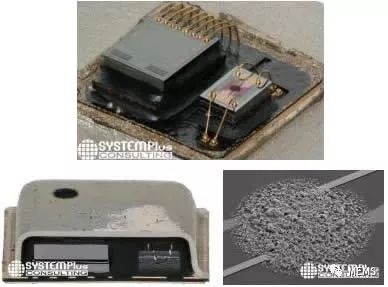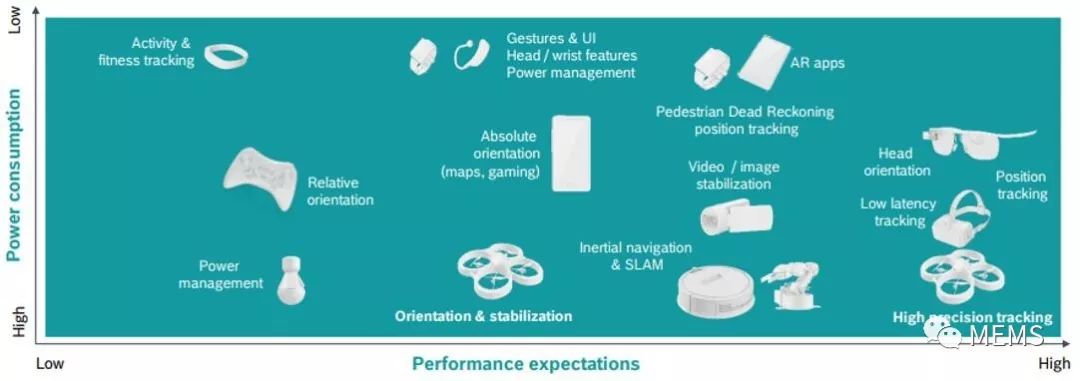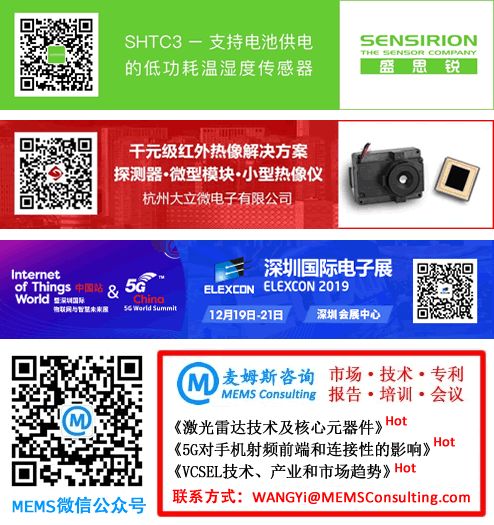According to MEMS Consulting, looking to the future, core chips, especially MEMS sensors, will remain an indispensable part of terminal devices; however, software is equally important in delivering value to users. Bosch Sensortec believes that sensor software will become increasingly intelligent, transforming MEMS sensors into more accurate and personalized systems that can help users cope with any situation.
Markus Ulm, Chief Technology Officer of Bosch Sensortec (a wholly-owned subsidiary of Robert Bosch GmbH), stated: “Software will empower traditional sensor components with more functionalities. I firmly believe this will have a significant impact on our industry and further promote the use of MEMS sensors in current and new applications.”
The Difficult Path to MEMS Standardization
“One product, one process” is a well-known rule in the MEMS industry. To meet users’ specific requirements in power consumption, latency, stability, and storage, MEMS devices need to be highly customized. For instance, VR headsets require the shortest latency, while robotic vacuum cleaners need high stability under varying temperatures, and wearable devices need to perform self-learning and directional tracking with ultra-low power consumption. Ulm said: “Developing a product that is applicable to all situations, has sufficient coverage, and is truly commercially viable is very difficult.”
Moreover, the trend towards standardization in MEMS processes is not obvious, which is a significant difference from conventional semiconductor processes. Damianos Dimitrios, a technology market analyst at French consulting firm Yole, stated: “Despite discussions about standardization for the past twenty to thirty years, there has been almost no improvement or progress in MEMS standardization. This is why the business models of MEMS foundries and CMOS foundries differ.”
Ulm believes that software will be a crucial driving force to break this deadlock and create commercial significance.
Edge Artificial Intelligence (AI) Makes MEMS Sensors Smarter
From reading sensor data, evaluating data, to ultimately learning from the data and making local decisions, software has come a long way.
Ulm said: “The combination of software and hardware will bring new manufacturing methods and sensing approaches to sensors.”
If the hardware component contains multiple sensors, the software can aggregate various raw measurement data and transform it into more valuable information. Ulm continued: “Thus, compared to the raw data from sensor components, the entire system can generate higher-level information. For example, Bosch Sensortec’s BME680 gas sensor (“Bosch Four-in-One Environmental Sensor (Integrated Gas Sensor): BME680″) integrates four sensing functions: gas, pressure, humidity, and temperature. If we only use the raw data from the sensors, we cannot distinguish between different gases. However, through software, temperature spectral analysis can be implemented in the gas sensor.”

Disassembly and Reverse Analysis of Bosch Environmental Sensor BME680
Image Source: “Bosch Four-in-One Environmental Sensor (Integrated Gas Sensor): BME680”
Sensor fusion is software that intelligently combines and evaluates data from multiple sensors to enhance applications or improve system performance. However, in practice, enabling multiple sensors to work together and collect useful data is not so simple and straightforward.
Ulm explained: “To simplify the sensor fusion process, you either need to enhance computational power or create some machine learning algorithms to process all this data, classify it, and then understand which sensor the data comes from and what it can tell us.”
Equally challenging is the processing power, Damianos added: “You need stronger data processing capabilities, but ultimately, you must reduce power consumption to allow devices to be used longer, especially in consumer applications.”

Ulm pointed out: “Sensor fusion technology has not reached its limit and requires further research and development. Bosch’s approach includes leveraging artificial intelligence (AI) and software integration to make consumer electronics smarter. Software integration refers to the method of automatically generating code based on domain knowledge and specific product version constraints.” Ulm further commented: “Sensor fusion technology has achieved a certain level of automation, creating new opportunities for more complex sensor fusion, such as the integration of big data and a vast number of potential data sources, which was previously unattainable using traditional methods.”
Software not only increases the value of the sensors themselves but also adds value to the entire system. Software will become smarter, capable of implementing AI within the MEMS sensors themselves. Ulm said: “We have heard a lot about AI, but I want to advocate for edge AI as a solution that drives our industry forward and benefits use case promotion.” Having MEMS devices directly equipped with AI capabilities not only helps in developing new applications but also benefits users.
Running AI algorithms on edge devices indeed brings many benefits to users. The first is personalization; devices run computations locally and can optimize based on users’ personal behaviors. The second is user data privacy protection; since data processing occurs only on the edge without uploading to the cloud, the data remains private. The third benefit is real-time feedback. Ulm explained: “If you send data content to the cloud for processing and then retrieve it, in many cases you will encounter unwanted delays, but executing on the edge avoids delays caused by data transmission.” The fourth is that local processing can extend battery life.

Markus Ulm, Chief Technology Officer of Bosch Sensortec
However, there are still some key factors limiting the success of edge AI. Ulm said: “For edge AI, it is crucial not only to understand and control the data but also to understand and control the algorithms. Both are essential.” He further explained: “To make edge AI successful, we need three things: First, algorithms that can run on edge devices under constraints. Understanding these algorithms and developing new ones that can operate under these conditions is critical. Second, data that is generated in real-time and must also be processed in real-time. Third, understanding context, which means interpreting the data requires understanding its significance based on specific use cases and assessing its value based on special circumstances. For example, the value could be about how to handle situations differently based on real-time feedback.”
Edge AI is still in its early stages of development. Ulm stated that currently, the machine learning community is primarily focused on cloud-based big data processing and solutions for large-scale problems, so various challenges of edge AI have yet to be overcome.
Damianos believes the main challenges for edge AI stem from power consumption and the limitations of Moore’s Law. “We all know that Moore’s Law is coming to an end. We are unsure if it will die out, but at least it will slow down; the number of transistors in processing units is subject to certain physical limits. Another definite challenge is data privacy regulations. In Europe, we have GDPR (General Data Protection Regulation), but the situation is still unclear in other continents.”
When asked how MEMS sensor companies can differentiate edge AI and prove its legitimacy compared to cloud providers, Ulm cited many use cases illustrating the potential value and benefits of edge AI close to the sensor. Ulm stated: “MEMS sensor companies can leverage their expertise to handle edge constraints, thus enabling local machine learning solutions. Most importantly, we understand how sensors work.”
Further Reading:
“MEMS Industry Status – 2019 Edition”
“Wearable Sensor Technology and Market – 2018 Edition”
“Gas and Particle Sensors – 2018 Edition”
“Bosch Four-in-One Environmental Sensor (Integrated Gas Sensor): BME680”
Recommended Training:
“MEMS Manufacturing Process Training Course”to be held from December 6 to 8 in Suzhou, this course invites outstanding lecturers and industry experts in the MEMS field to focus on core MEMS technologies, including: (1) Non-silicon-based MEMS manufacturing processes; (2) Silicon-based MEMS manufacturing processes; (3) Key equipment and materials for MEMS manufacturing; (4) Wafer-level packaging manufacturing technology; (5) Through-silicon vias (TSV), through-glass vias (TGV), and filling processes; (6) Piezoelectric thin film manufacturing processes; (7) Magnetic thin film manufacturing processes; (8) Visits and learning about silicon-based MEMS pilot platforms and non-silicon-based microfluidic manufacturing platforms.If you are interested, please contact:
MEMS Consulting
Contact person: Zhao Tingting
Phone: 18021192087
Email: [email protected]
